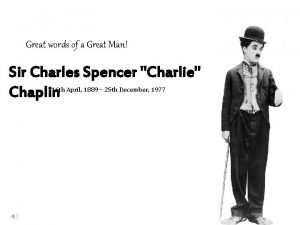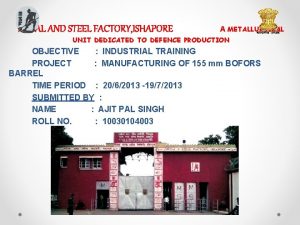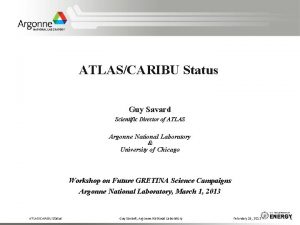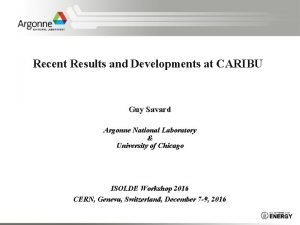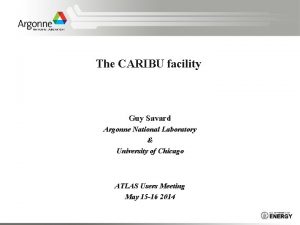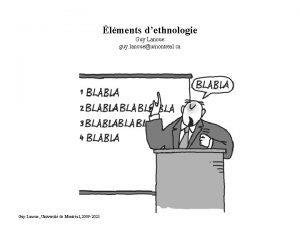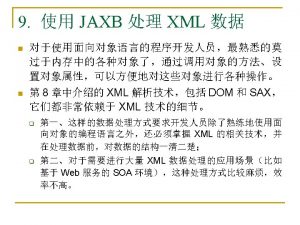N126 factory and rprocess Guy Savard Scientific Director











- Slides: 11

N=126 factory and r-process Guy Savard Scientific Director of ATLAS Argonne National Laboratory & University of Chicago ATLAS Users Meeting ANL, May 15 -16, 2014

R-process sensitivity to nuclear physics input Hot r-process Supernova neutrinodriven wind cold r-process Neutron-star merger cold rprocess binding energy neutron-capture rate lifetime From R. Surman, M. Mumpower et al, ar. Xiv: 1039. 0059 v 1 ATLAS Users Meeting Guy Savard, Argonne National Laboratory May 15 -16, 2014 2

1 Ge. V/u 238 U + 1 H Armbruster et al. 238 U § difficult to reach via fragmentation § cannot be reached via fusion § unique physics, critical to the r-process, which is wide open for a facility able to reach there, even in the FRIB era ATLAS Users Meeting Guy Savard, Argonne National Laboratory May 15 -16, 2014 3

Producing neutron-rich N=126 nuclei § Production using deep-inelastic reaction: e. g. : 136 Xe at 9 Me. V/u and 5 pm. A on a 10 mg/cm 2 198 Pt rotating target Calculated using GRAZING (http: //personalpages. to. infn. it/~nanni/grazing) All of these isotopes, except for 204 Pt, are unknown … no mass, lifetime or decay properties known Extracted beam: ~ 15% of production ATLAS Users Meeting Guy Savard, Argonne National Laboratory May 15 -16, 2014 4

Collecting the N=126 recoils § § § Deep inelastic reactions used in the past to produced n-rich isotopes, the products identified in complex setups (Mayer 1985, Corradi 1999, …), but no system has so far been able to collect them efficiently. But the cross-section are high and with high primary beam intensity and efficient collection efficiency sizable yield in unexplored n-rich regions are reachable Proposed collection system capitalizes on • High primary beam intensity • High -intensity gas catcher technology § Feed low-energy systems: mass measurements, decay spectroscopy, … target-like recoils beam dump extracted recoils 136 Xe to selection stage rotating 198 Pt target ATLAS Users Meeting Guy Savard, Argonne National Laboratory May 15 -16, 2014 5

The CPT-II apparatus and low-energy stations for deep-inelastic reaction products Decay Station § Designed to push back space charge limit – RFQ ion guide now operating in DC mode to avoid space charge build up – Rough mass separation by inflight mass separator before isobar separator – Rest of system essentially the same § § Mass separator (DM/M ~ 1/1000) ATLAS Users Meeting Guy Savard, Argonne National Laboratory Can operate at up to 5 -50 pm. A while still providing required selection before precision Penning trap Deep inelastic reactions down to ~0. 01 mb … around 198 Hf on N=126 line May 15 -16, 2014 6

Existing target wheel can handle expected highintensity beams § Even with the most volatile metals, existing large rotating wheel can handle 10 pm. A Courtesy of F. Pellemoine (GANIL) § For typical metal targets with melting points above 1000 C, can handle 100 pm. A. ATLAS Users Meeting Guy Savard, Argonne National Laboratory May 15 -16, 2014 7

Mass measurements of neutron-rich nuclides • Masses determined via a measurement of the ions’ cyclotron frequency • Can measure the mass with a production rate of ~ 1 ion / s • Mass precision ~ 10 -7 to 10 -8 (10 -100 ke. V/c 2) for masses approaching the r process • Canadian Penning Trap (CPT) has measured more than 100 neutron-rich nuclides, including more than 70 from CARIBU (including 6 isomers) Original • ~ 20 had never been previously measured by any technique Area II 2012 CARIBU 2013 • Currently reaching isotopes produced at the 10 -6 fission branch level • For some nuclei, no prior information on the nuclide existed! ATLAS Users Meeting Guy Savard, Argonne National Laboratory J. Van Schelt et al. , Phys. Rev. C 85, 045805 (2012) May 2014 J. 15 -16, Van Schelt et al. , Phys. Rev. Lett. 111, 061102 (2013) 8

Comparison with the 2003 atomic mass evaluation J. Van Schelt et al. , Phys. Rev. C 85, 045805 (2012) J. Van Schelt et al. , Phys. Rev. Lett. , submitted (2013) Sn Sb Te I Xe Cs Pr Nd Pm Sm Eu Gd Less binding In Higher N • Trends indicate nuclei are less bound with neutron excess (affects the location of the rprocess path • Good agreement with other Penning trap results and reaction Q value measurements • Large disagreement with results obtained with βdecay measurements ATLAS Users Meeting Guy Savard, Argonne National Laboratory 9

Low-energy experimental equipment Beam properties § Delivers 1. 5 k. V to 10 k. V beam to experimental stations • Pulsed beams with rates from ~ 50 ms to seconds • Low emittance • High purity • Experimental stations: CPT LASER LAB BPT X-ARRAY (installed) • Limited amount of space … but by now we are used to that ATLAS Users Meeting Guy Savard, Argonne National Laboratory May 15 -16, 2014 10

Status § Main components are being constructed § Production system will be installed in experimental area III in early 2015 § CPT moved to this area later in 2015 to start mass measurement program in this region § Low-energy beamline to deliver these beams to various experiments to be stationed temporarily in area III to follow. Provides: – Unique beams – High purity – Not high intensity but far reaching so well suited to sensitive low-energy experiments ATLAS Users Meeting Guy Savard, Argonne National Laboratory May 15 -16, 2014 11
 Jeannine savard la d'ou je viens
Jeannine savard la d'ou je viens Java factory factory joke
Java factory factory joke Taktik good guy bad guy
Taktik good guy bad guy Scientific inquiry vs scientific method
Scientific inquiry vs scientific method How is a scientific law different from a scientific theory?
How is a scientific law different from a scientific theory? English comic actor and film director
English comic actor and film director English comic actor and film director
English comic actor and film director English comic actor and film director
English comic actor and film director Adjectives to describe charlie bucket
Adjectives to describe charlie bucket Metal factory ishapore
Metal factory ishapore Chapter 18 charlie and the chocolate factory
Chapter 18 charlie and the chocolate factory Here comes charlie chapter 1
Here comes charlie chapter 1





